 Patrick Weekes’ first novel The Palace Job [Amazon | B&N | Mysterious Galaxy] came out two weeks ago. (And I would have had this post up then, if not for the fact that … um … okay, I got nothing. Apparently I just suck at getting things done on time lately.)
Patrick Weekes’ first novel The Palace Job [Amazon | B&N | Mysterious Galaxy] came out two weeks ago. (And I would have had this post up then, if not for the fact that … um … okay, I got nothing. Apparently I just suck at getting things done on time lately.)
Anyway, not only does Weekes have both a novel and short fiction credits to his name, but he’s also done a lot of video game writing. I asked him if he would talk about how he got into video game writing, and the difference between writing a novel and writing a game.
Getting to hear about him being mauled by kobolds was just a bonus 🙂
You can read an excerpt of his new book at the Tyche Books website, or find him online at LiveJournal, the BioWare Blog, and Facebook.
#
I came to video games as a player first. Primarily, in fact, as a somewhat terrible player. In the very old Telengard, I was the one wandering down to level 57 and getting eaten by demons. In the marginally less-old Gold Box Pool of Radiance on the Commodore 64, I was the one whose characters, all named after the heroes from Dragonlance, got mauled by kobolds. In Wing Commander, I was relieved to discover that you got medals for at least the first couple of times you panic-ejected. And in Star Control 2, I learned to sit patiently in hyperspace and wait for the Melnorme to come rescue me after the third or fourth time I forgot to purchase fuel.
As I grew up, I ran Dungeons & Dragons campaigns, built worlds, argued over rules, and went through the trials and tribulations that every gaming group encounters. I also started writing my own fiction, starting out with dark literary fiction in college and then gradually moving to lighter and happier work as I found my voice. On the video-game front, I played everything I could by a video-game studio called BioWare — the Baldur’s Gate series, then Neverwinter Nights, and finally Star Wars: Knights of the Old Republic.
I came to BioWare after the editor at Amazing Stories, Dave Gross, bought a couple of stories about a nameless hero and his talking magical sword, and then joined BioWare and asked if I was interested. That was back in 2005. Since then, I’ve written on three games and sold a few more stories, along with my first novel, which came out on September 26th. It’s been an amazing ride, and it’s taught me some interesting things about writing for both the reader and the player.
The first and most obvious point when thinking about writing in games and in novels is that in a game like the ones we make at BioWare, the player has some measure of control over which characters they interact with, and how they talk with and form relationships with those characters. You have to be careful about writing a scene assuming that the player feels a certain way. Writing a buddy scene with the player and a character chatting over drinks? Whoops, it turns out that the player might never have spoken to that character before, and all your familiar old-friend dialog falls flat. Writing a scene where the player intercedes in an argument between two furious characters? Oh, by the way, you might be romancing one of them, and you might or might not have betrayed the other one on a deeply personal mission fifteen minutes ago. Writing an epic sacrifice scene where a beloved character dies tragically? As it turns out, the player has spent the last few hours on Twitter telling all her friends how incredibly annoying this character is, and how they really hope there’s a way to kill him off in the last act.
I used to think of this as a major difference — when I write a novel, I control how well the reader knows the characters, so I’ve got the final say in how those emotional scenes play out, right? As it turns out, working on video games helped me realize how important the reader is. My favorite character in the novel I’m writing might be the one that some readers reluctantly put up with. As a reader, I’ve read clunky novels and hit a point where I was clearly supposed to sympathize with a character who’d come up against terrible misfortune, but my reaction as a reader was, “Well, what did you think was going to happen, dumbass?”
As a novel writer, I’m in control of what the reader sees and hears, but not what the reader feels. Any emotional engagement on the reader’s part, I have to earn. As a result, when writing for games, I put the most emotional dialog behind logic checks that require that the player previously put time into making a connection with that character. And when I’m writing novels, I leave enough emotional content up for inference that the readers who are emotionally engaged will appreciate the scene, while those who don’t care about the character don’t have the assumption of an emotion they don’t share rubbed in their faces.
There are a lot of other differences, of course — writing as part of a team instead of being the sole creator of the world, writing dialog that is spoken aloud by a voice actor instead of read directly by the reader, and working with artists instead of simply writing descriptions for whatever I can imagine — but those aren’t specific to games. Every shared-world contributor has dealt with a team, and every playwright and screenwriter has had to learn to write for ear instead of the eye and work with the artists and set designers to create a shared vision. Video-game writing is where I learned to think of the reader not as the passive recipient of my wit and wisdom, but as an active participant who comes to my stories with his or her own experience, assumptions, and biases… and whose reactions to the story are going to vary accordingly.
Hopefully, then, it’s helped me learn to write things that work for more people. Or at least don’t leave people feeling like they’ve been mauled by kobolds.







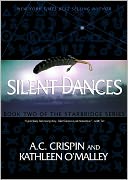
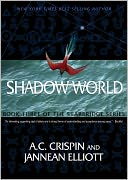

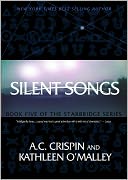
 Patrick Weekes’ first novel The Palace Job
Patrick Weekes’ first novel The Palace Job 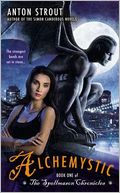 B)
B) 
 I read
I read 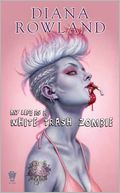 I also just finished
I also just finished  I mean, I understand wanting to look good, and I get that clothes can affect how you feel. When I was tuxed up for Writers of the Future 13 years ago, I was amused to note how it affected my posture and manners. The leather jacket of infinite pockets I picked up a few years ago is something I’ve learned to associate with Jim-the-Writer, and helps me get into that mindset. (It’s exactly like Bruce Wayne’s psychological transformation when he dons his cape and cowl. I am Writing Batman!)
I mean, I understand wanting to look good, and I get that clothes can affect how you feel. When I was tuxed up for Writers of the Future 13 years ago, I was amused to note how it affected my posture and manners. The leather jacket of infinite pockets I picked up a few years ago is something I’ve learned to associate with Jim-the-Writer, and helps me get into that mindset. (It’s exactly like Bruce Wayne’s psychological transformation when he dons his cape and cowl. I am Writing Batman!)